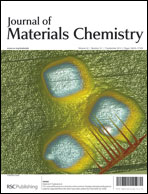There is currently a strong demand for energy storage devices which are cheap, light weight, flexible, and possess high power and energy densities to meet the various requirements of modern gadgets. Herein, we prepare a flexible and easily processed electrode via a simple “brush-coating and drying” process using everyday cotton cloth as the platform and a stable graphene oxide (GO) suspension as the ink. After such a simple manufacturing operation followed by annealing at 300 °C in argon atmosphere, the as-obtained graphene sheets (GNSs)–cotton cloth (CC) composite fabric exhibits good electrical conductivity, outstanding flexibility, and strong adhesion between GNSs and cotton fibers. Using this GNSs–CC composite fabric as the electrode material and pure CC as the separator, a home-made supercapacitor was fabricated. The supercapacitor shows the specific capacitance of 81.7 F g−1 (two-electrode system) in aqueous electrolyte, which is one of the highest values for GNSs-based supercapacitors. Moreover, the supercapacitor also exhibits satisfactory capacitance in ionic-liquid/organic electrolyte. An all-fabric supercapacitor was also fabricated using pure CC as separator and GNSs–CC composite fabric as electrode and current collector. Such a conductive GNSs–CC composite fabric may provide new design opportunities for wearable electronics and energy storage applications.

You have access to this article
 Please wait while we load your content...
Something went wrong. Try again?
Please wait while we load your content...
Something went wrong. Try again?


 Please wait while we load your content...
Please wait while we load your content...